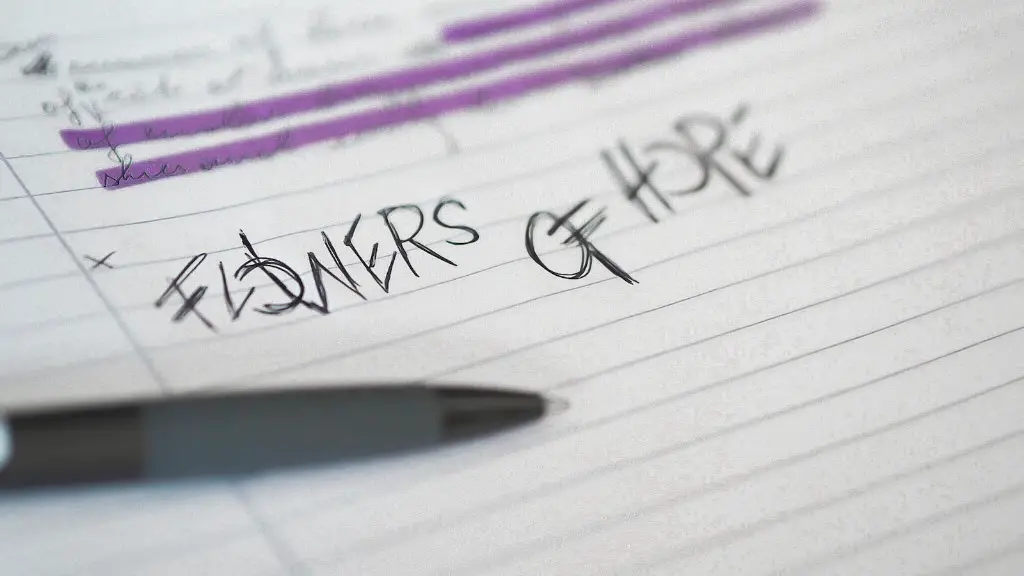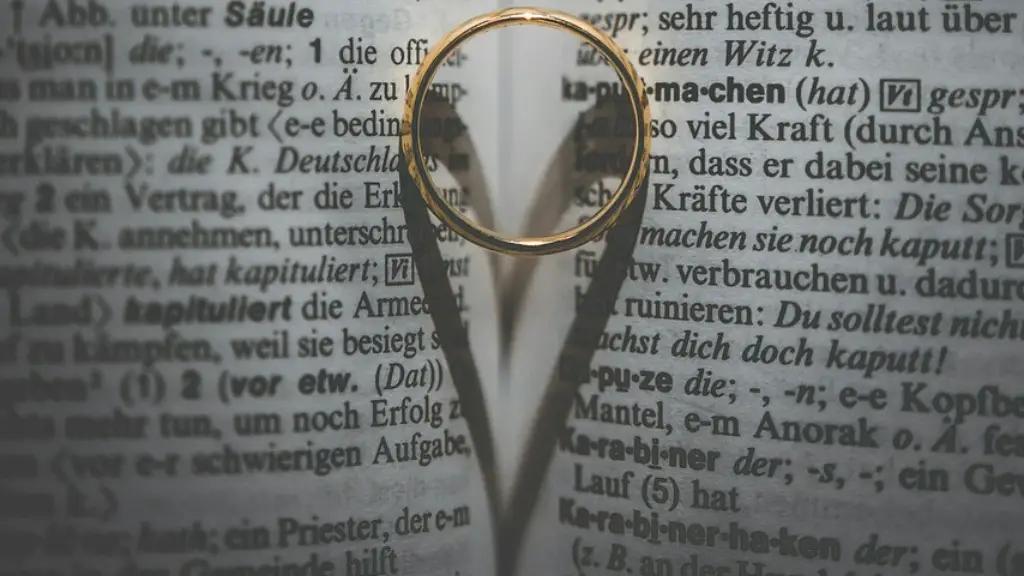Themes and Representations
Poetry can be seen as a representation of the world or a particular field or subject matter. It is often used to express emotions and feelings about a given subject. For example, a poem about the environment may express a sense of concern for the earth and its inhabitants, or it may be a plea for better stewardship of natural resources. Poetry can also be used to explore and experience a range of topics – from politics, to love, to science, to history. Whatever the subject, the aim of poetry is usually to create a sense of understanding and connection to the world, enhancing our understanding of the world around us.
The structure of poetry can really influence the way it is read and appreciated. Crystalline poetry, for example, tends to be structured into shorter lines and phrases, making it easier to read and understand. On the other hand, more lyrical poems are often much longer sentences and have more intense emotions associated with them. Similarly, sonnets – poems which follow a 14-line structure – tend to be highly structured and involve complex themes and metaphors. Poetry is often used to evoke different moods and feelings, and its structure and imagery can be used to do this.
However, the most important element of poetry is the way that it can evoke emotions and feelings from the reader. Through its choice of words and its structure, the poet can create a powerful atmosphere that expresses the feelings of the poet and evokes feelings in the reader. This is why poetry is often seen as a powerful form of self-expression; it can be used to convey deep emotions that are not easily expressed in regular conversation.
Symbolic Use
Poetry can often be used as a way to communicate ideas, thoughts and feelings that are not easily expressed in other forms of communication. The poet puts to use a variety of symbols, figures and devices to get across the message they are trying to communicate. For example, a poet may use metaphors and imagery to express a certain feeling or emotion, or to provide a deeper insight into their subject matter. However, the poet also has to be careful not to use language which is too complex for the reader to understand or follow.
Similarly, poets often use symbolism to convey a message or theme. Symbols are often used to represent an idea or emotion, such as a rose being used to convey love or a dove representing peace. The use of symbols can be incredibly powerful when used properly, as they can help to give the reader an immediate understanding of the poem’s message and theme.
Form and Content
The form and content of poetry often have a strong influence on how the poem is interpreted. The form and structure of a poem is often used to give further meaning to the poem’s content. For example, a poem which contains many stanzas and complex rhymes may convey a sense of a longer, more complicated journey, while a poem which is composed of short, sharp lines may express a sense of greater intensity or urgency. The length of a poem can also be important; a longer poem usually has more time to develop ideas and themes, while a shorter poem can be effective in conveying a single, powerful theme or idea.
Types of Poetry
There are a wide range of different types of poetry, from the traditional sonnets, haikus and limericks, to the more modern and experimental forms. Depending on the style and technique used, different types of poetry can communicate different messages and emotions. For example, haikus – which consist of three lines of 5, 7 and 5 syllables, respectively – are often used to express nature or scenes of beauty, while a longer poem may be used to express a more profound and complex theme.
The language used in poetry can also vary greatly. While traditional, rhyming poetry often uses standard, more conventional forms of language, modern poetry may use unique diction which alludes to more ethereal or abstract concepts. Similarly, some modern poets use slang or jargon to convey their message.
Poetry Analysis
Poetry analysis is a way of interpreting poetry in order to gain a deeper understanding of its underlying message, emotion and meaning. While this can be achieved through close reading and interpreting the poem’s content and form, it is often easier to gain an insight into the meaning of a poem by using broader themes and topics. For example, if the poem is about love, one can gain a deeper understanding by looking at other poems and works which explore the theme of love.
Analysis of a poem can also involve examining the poet’s use of language, figures of speech and metaphors, as well as looking at the syntactical structure of the poem. By looking at all these elements together, one can gain a deeper insight into the poem’s underlying meaning. The analysis of a poem is, in essence, the practice of studying a poem in order to gain a better understanding of its subject, themes, meaning and even the poet’s intentions behind the work.
Aesthetic Interpretation
Aesthetic interpretation of a poem is slightly different to analysis, as it focuses more on the poem’s content and form than its deeper meaning. This approach involves looking at the poem’s form and structure, as well as its imagery, rhythm and rhyme, to gain a better understanding of its aesthetic impact. By looking at a poem in this way, one can gain an insight into its beauty, power and emotion without necessarily interpreting its deeper meaning.
Aesthetic interpretation of a poem can also involve looking at the poet’s use of words and its tone. By looking at the way the poem is crafted, one can gain a better understanding of the poem’s effect on the reader. This approach can often lead to a greater appreciation of the poem, as one can gain an understanding of the poem’s effect, even if one is not familiar with the deeper meaning of the poem.
Conclusion
In conclusion, poetry is a powerful medium which can be used to evoke different emotions and feelings in the reader. It is a form of self-expression which involves the use of words and symbols to communicate ideas and emotions. Poetry can take many forms, from sonnets to haikus, and its structure and imagery can be used to evoke different moods and emotions. Through analysis and aesthetic interpretation, one can gain a greater insight into the poem’s message, emotion and beauty.



